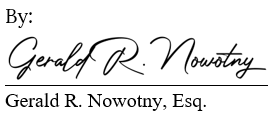
Overview
I finished my last two years of high school at Culver Military Academy in Culver Indiana graduating in 1978. I attended the school sight unseen. I had never been to the school before I attended and had never seen a picture of the school before attending and did not know anyone else who attended the school. On top of that, I had never been in weather cooler than eighty degrees; as a result of growing up in the heat and humidity of the Panama Canal Zone. Weather historians may remember the blizzard of 1978 where the wind chill dropped to minus 50 degrees Fahrenheit. Of course, this would be during the time when I had the flu and had to walk a mile to the student infirmary in the blizzard. That was a “to be or not to be moment” in my high school life.
I remember taking a one semester class in my senior year of high school on Shakespeare. The teacher was British. We seemed to have read everything except Hamlet. Over the years, I have seen a number of Shakespeare productions on television or in person in theater but never read Hamlet. Oh well! Hopefully, this article will be the impetus to see a great production on television as well as in the theater.
The focus of this article illustrates why private placement life insurance (“PPLI”) is the best asset to utilize in the “Buy, Borrow and Die” strategy for high net worth investors including billionaires. After this article, the conclusion should not even open to debate. Nevertheless, you will let me know.
Buy, Borrow and Die
When Senator Byden was Chairman of the Senate Finance Committee, he took aim at billionaires and their approach to tax panning in the Biden administration. Professor Ed McCaffrey of the USC Law School outlined this tax strategy in the 1990’s but in reality, the use of this strategy pre-dates his focus.
The Senate Finance Committee defines the strategy as follows:
(1) Buy: A high net worth taxpayer uses their wealth to buy assets that appreciate in value (real estate, stocks, artwork, collectibles).
(2) Borrow: The taxpayer then borrows against that asset’s growing, untaxed value to fund their extravagant lifestyle, purchasing yachts, luxurious vacations, expensive art deals, and more. All the while, the assets continue to go up in value without current taxation.
(3) Die: When the taxpayer dies, their assets are passed to their children or other beneficiaries, often entirely tax-free, and the cycle continues.
The elements that allow this strategy are simple and straight-forward. The strategy does not explicitly favor high net worth investors by income and net worth. The rules apply to every taxpayer. A capital asset is not subject to capital gains taxation until it is disposed of by the taxpayer. Many lenders will lend against these capital assets subject to the lending restrictions of the lending financial institutions and margin lending regulations.
For example, a lender may lend up to 50-60 percent against the equity of commercial real estate and 50 percent of public equities. Loan proceeds receive tax-free treatment for the borrower. At death, a capital asset receives a step up (increase) to the date of death value. The increase in value allows the taxpayer’s estate or heirs to sell the asset without taxation to repay the debt against the assets. Rinse and repeat!
PPLI as the Ultimate Asset for the Buy, Borrow and Die Strategy
PPLI is an institutionally priced variable universal life insurance policy with customized investment options. Life insurance is the most tax-advantaged asset class of any investment. Large corporations, banks and insurers own over $250 billion in life insurance policy assets in the United States. Individual life insurance policy assets exceed this amount. Life insurance has received favorable tax treatment since the federal income tax was adopted in 1913.
Life insurance receives favorable tax treatment globally. Consequently, it is more than fair to say that high net worth taxpayers have not lobbied their favorite politician to adopt and maintain protective tax treatment for life insurance exclusively for high net worth taxpayers. High net worth taxpayers play according to the same rules as everyone else according to the Internal Revenue Code when it comes to life insurance.
Permanent life insurance including PPLI provides for the tax-deferred buildup of the cash value. The investment income of a PPLI policy accrues on a tax-deferred basis. Under the Internal Revenue Code, the policy death benefit receives tax-free treatment. Policies that are treated as non-modified endowment contracts provide the policyowner with the ability to access policy loans up to 90 percent of the policy account value during the insured’s lifetime, tax-free. Life insurance policy loans receive tax-free treatment. A life insurance loan is a non-recourse loan. Policy assets provide the collateral for the loan. The interest rate for a policy loan varies by life insurer. Some life insurers have “zero net cost” loans in which the interest rate credited on the loan collateral is the same as the borrowing rate. Other life insurers have a fixed or variable rate where the loan “spread” is 25-100 basis points (0.25%-1.00%) per year. The loan interest may be paid currently or accumulated to the loan balance. At death, the accumulated loan principal and interests is repaid from the policy death benefit. Under the tax rules, the death benefit is always more than the accumulated loan.
How Deep is Your Love? The Advantages of PPLI in the Buy, Borrow and Die Strategy
PPLI has several advantages over the standard version of the “Buy, Borrow, and Die” strategy that had Senator Wyden and the Democrats outraged. First without life insurance, any income earned on a capital assets whether as rental or lease income of dividends from public equites is currently taxable to the taxpayer. In PPLI any income within the policy is not taxable to the policyowner.
Second, the borrowing limits against most capital assets is limited by the lender or securities regulation is superior in the PPLI version of “Buy, Borrow, and Die.” Life insurance policies by policy terms provides the policyowner with the ability to borrow up to 90 percent of the account value at the time of the loan. The policyowner can pay the interest currently or accrue the interest. The accrued policy loan at the time of death is netted from the policy death benefit. There is no cancellation of indebtedness tax consideration. The net policy death benefit is received by the policy beneficiary income and estate tax-free is desired.
Without PPLI, the step up in basis subjects the capital asset to estate tax inclusion. If the capital asset is not retained until death and transferred for estate tax planning purposes using a technique such as a GRAT, the done receives a carryover basis for income tax purposes. Consequently, the capital asset cannot be sold without capital gains consequences to repay the debt. In some cases, the taxpayer may have an intent to retain the capital asset indefinitely.
Third, PPLI is not limited in investment flexibility. A real estate investor may find himself boxed in through a series of 1031 exchanges. An investor in public or private equities may find himself restricted by the margin lending limits particularly when the market value in the capital asset declines. The loan requirements for PPLI remain static throughout the loan, e.g., the loan is based on the fair market value at the time of the loan and is unaffected by fluctuations in the account value after the loan.
For the wealthiest of the wealthy taxpayers, PPLI products exist that can maintain this planning posture (Buy, Borrow and Die) for 80-100 years beyond the taxpayer on a single policy. Creative planning exists to perpetuate this scenario beyond this planning period. A taxpayer can only plan based on what the law is today and not on what he hopes it might be or adversely have the “rug pulled” from underneath his. A billionaire could buy an existing life insurer or create his own carrier.
Summary
Everyone thinks that they are the smartest guy in the room until they find out they are not. I would be the last person on the Planet to make that claim. Nevertheless, I recognize a great planning opportunity when I see one. Buy, borrow and die is a great strategy. PPLI makes it several times better. The rest is silence!
